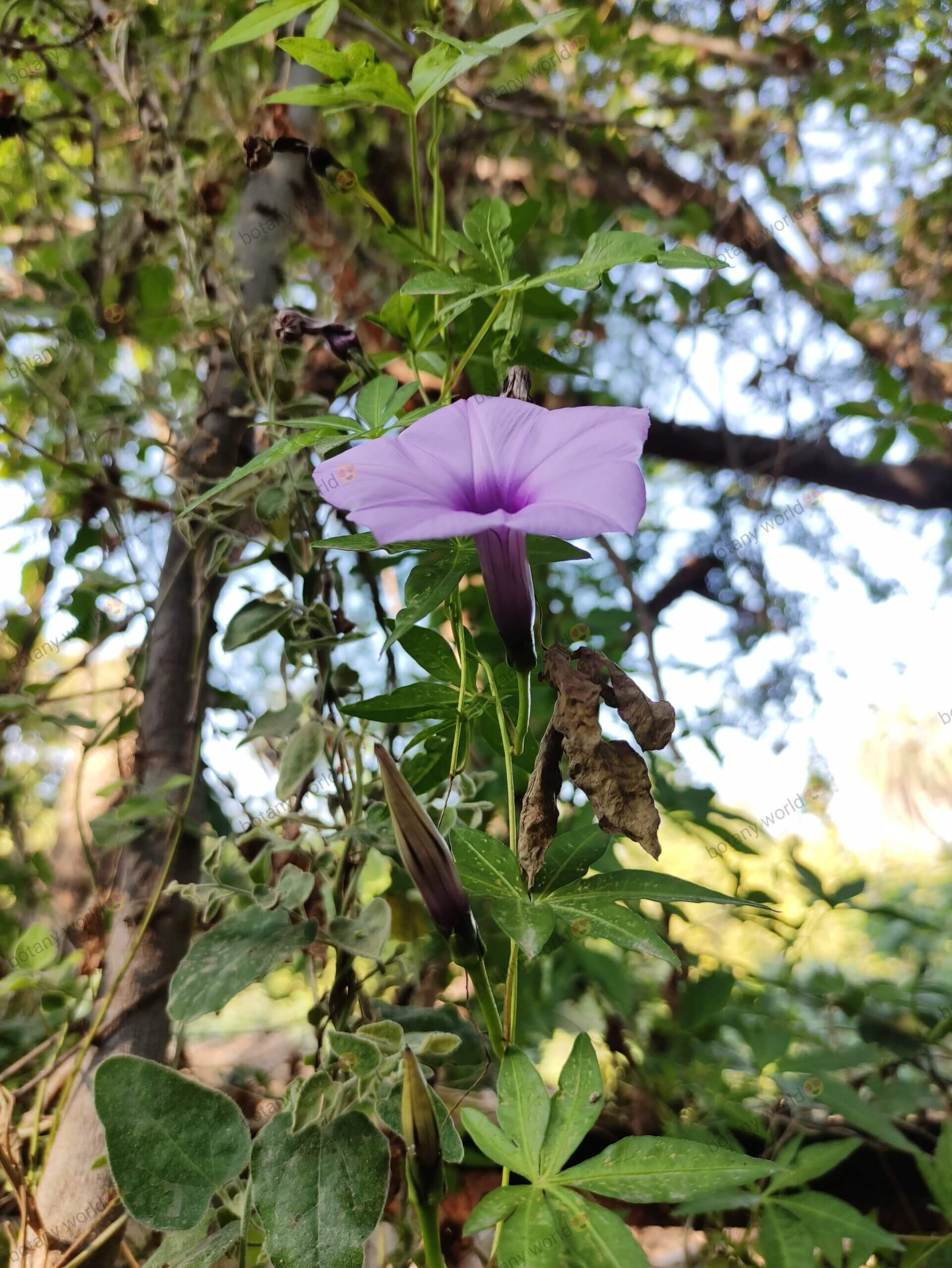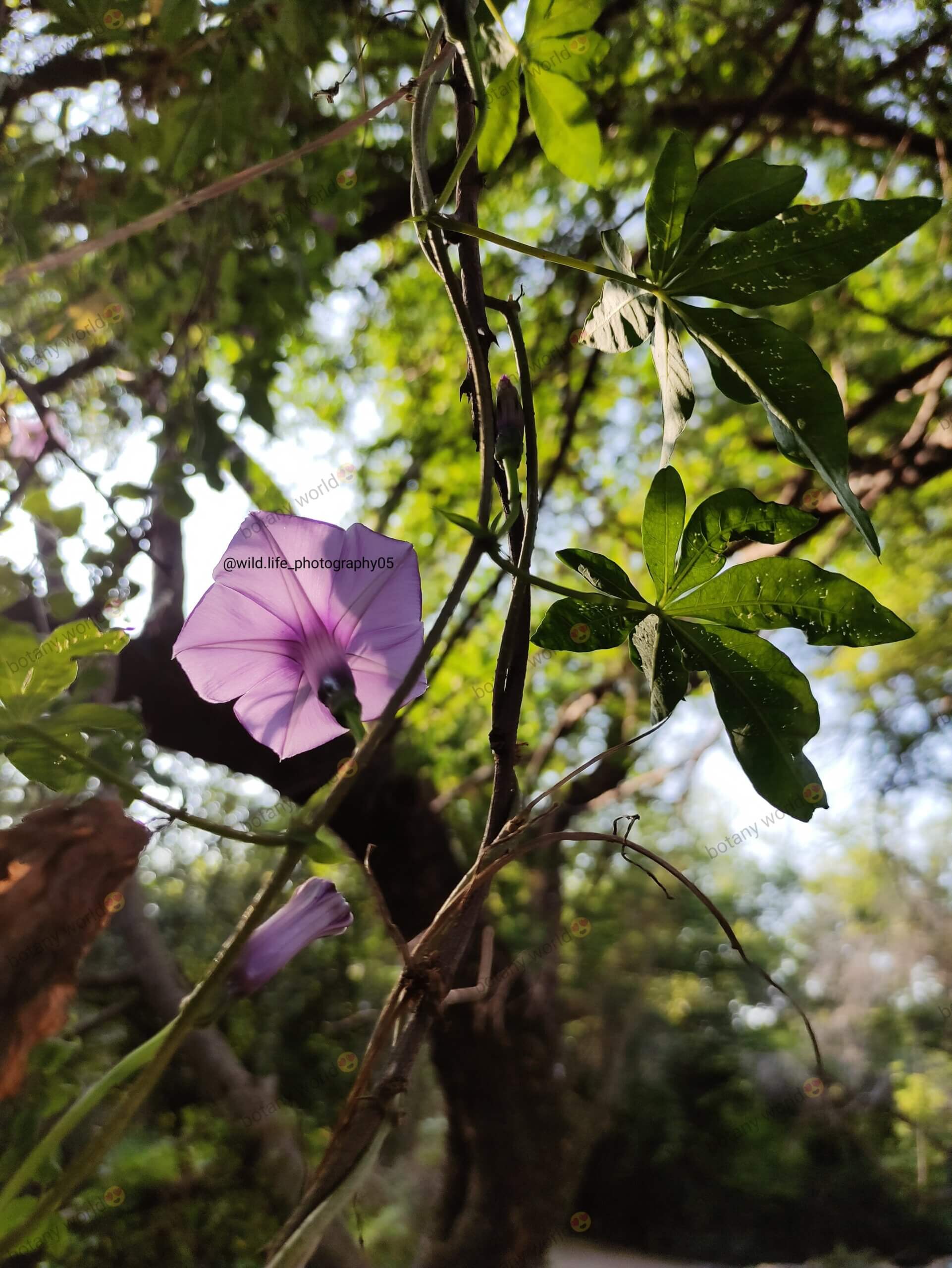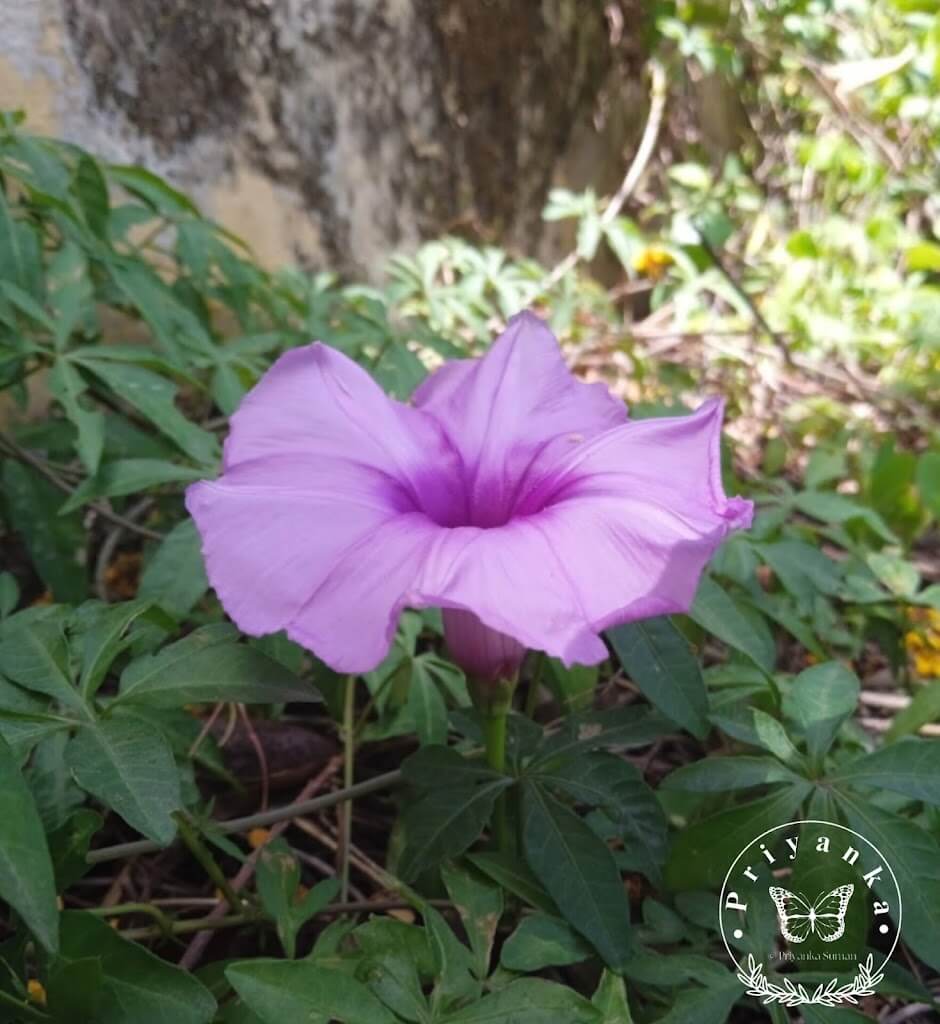IUCN Status
 : Not Applicable
: Not Applicable
- Gulab bagh, Udaipur, Rajasthan. / Sawai Madhopur / Jaipur
- Naturally grown
-
The Railway Creeper is one of the most common and useful evergreen climbing plants. It refreshes the landscape in the hottest weather with its vibrant green leaves and delicate mauve blooms. This plant is commonly found in gardens, villages, and almost every railway station, which is how it earned its nickname. It climbs on anything it can find.
Its stem is smooth and lacks hair, and it readily takes root when it comes into contact with the soil.
Ipomoea cairica can be identified by its leaves which are hairless to 8-10cm long with 5-7 lobes, middle lobe is the largest.
Its flowers can be purple, pink, or occasionally pinkish white; they grow either solitary or in groups of 2 to 3. -

Ipomoea cairica
plant body of Ipomoea cairica
Ipomoea cairica wrapped around the stem of Tinospora cordifolia -

Ipomoea cairica
The species name cairica translates to from "Cairo", the city where this species was first collected. -

Ipomoea cairica
Pic by Priyanka Suman

Beautiful pictures 😍